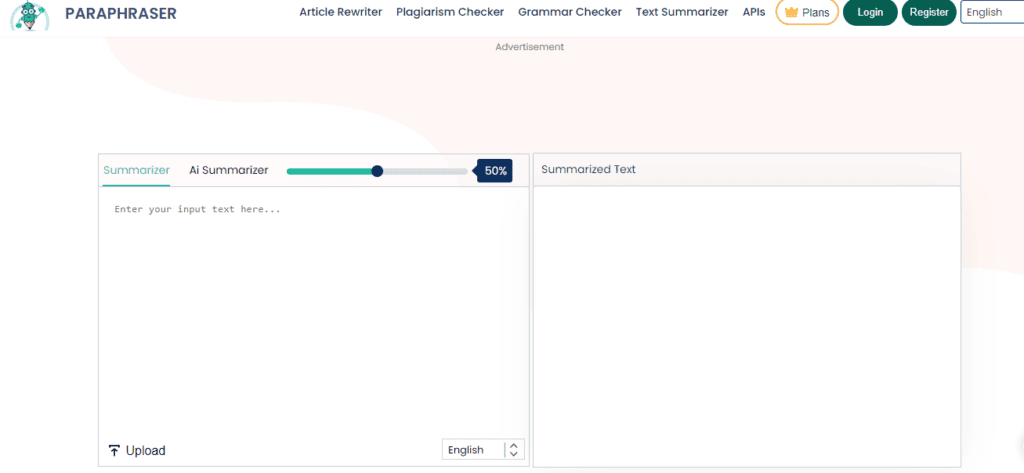5 Best AI Summarizing Tools in 2024 (Text, Audio, Video)
Have you ever found yourself drowning in a sea of information, wishing you could condense dozens of articles or hours of video down to the most essential details? In today’s world, it seems there’s more content than ever competing for our limited time and attention.
That’s where AI summarization tools come in. They use artificial intelligence to analyze lengthy texts and videos and automatically generate high-level summaries.
In this article, I’ll share with you my reviews of the best AI summarizing tools currently available based on my own experiences testing them out. Whether you’re a busy professional, student, or just someone who doesn’t have hours to dedicate to consuming every piece of content, these summarizers can be a real time-saver.
All of us have different needs and preferences when it comes to tools, so I’ll give you an overview of the key features and capabilities of each one. By the end, you’ll have determined which of the listed tools might be the best fit for your specific summarization needs and workflow.
What Is the Best AI Text Summarizer?
Let’s look at the best AI summary generators for text-based content.
1. QuillBot

QuillBot, known for its AI paraphrasing abilities, stood out to me as one of the most full-featured AI summarization tools on the market. Not only can it condense articles, papers, documents, and other lengthy texts, but it gives you a high degree of control over the summary generation process.
QuillBot’s text summarizer lets you use a handy length slider to determine just how short you want the resulting summary to be. This is extremely useful if you only have a minute to glance at the summary but still want the full context.
You also get the choice of either paragraph or bullet point summaries. The paragraph option maintains the flow of information better, while bullet points are better for quick scanning.
But my favorite QuillBot feature is the custom summary function. If you have very specific instructions like “summarize this paper and focus on the conclusions section”, you can enter that as input.
The AI is surprisingly good at understanding contextual requirements and tailoring the summary accordingly. Besides paraphrasing and summarizing, other QuillBot features include a text expander, grammar checker, and plagiarism detector.
2. Paraphraser.io

Now this free AI summarizer impressed me with its advanced summarization techniques. Paraphraser.io’s summarizer uses what’s called “abstractive summarization” which involves way more than just extracting keywords and sentences like other tools.
In other words, the AI analyzes the full context and meaning, then writes completely new sentences to summarize the core ideas while keeping the flow intact. This makes for a very polished and cohesive summary.
Using Paraphraser is straightforward. You can either paste or upload the text you want summarized, whether it’s an article, research paper, or book excerpt. Then hit the “Summarize” button and within seconds you’ll get the summary.
What I liked is that the tool can show you the number of words, characters, sentences, and paragraphs. It also shows the readability level, reading time, and speaking time.
You have some customization options too like choosing bullet points over paragraphs or adjusting the summary length. And, it supports 8 languages which is awesome if you work with international texts.
3. Summarizer.org

This online summarizer stood out to me for its simplicity and accuracy. Summarizer.org uses AI to analyze text and generate a high-level summary while preserving all the key details.
What I appreciated most is that it works with any type of content — essays, blog posts, research papers, you name it. The tool is very easy to use too. Just paste or upload your text into the input box. It will instantly show word counts for the original and summarized versions.
But Summarizer.org doesn’t stop there. It gives you full control over customizing the summary. You can manually set the length using a handy scrollbar. There are also options to display it as bullet points or a single best line from the text.
Plus, being multilingual is such a huge bonus since I work with various international sources. Summarizer supports 7 different languages at this point.
In all my tests, the AI did an excellent job of maintaining the key essence and flow while shortening everything concisely. There was never any loss in meaning or context.
What Is the Best AI Audio and Video Summarizer?
Next up, we have a list of the top AI summary tools for audio and video content.
4. Descript’s AI Summarizer

This was a unique one because it can generate summaries for video and audio content, not just text. Descript AI is a powerful AI audio and video editor with a multimedia summarization tool that stands out.
With Descript’s summary tool, you can either upload existing video footage or record directly within the editor. Then it’s as simple as clicking the “Ask AI” button and selecting “Summarize” from the options.
Within moments, the AI will analyze your video and produce a written summary highlighting the most important elements. You can even edit the generated summary if you want to include specific keywords or details for marketing purposes.
Once you’re happy with the result, you can drop the summary text directly into your YouTube video description or social media posts. This is such a handy way to optimize your content for search and engage viewers before they watch.
The best part is Descript lets you generate unlimited video summaries. And since it’s a desktop and web app, you aren’t limited by file sizes or formats like some other tools.
5. Notta’s AI Audio and Video Summarizer

Notta is a powerful AI transcription and note-taker with an advanced solution for audio and video summarization. It’s thus extremely valuable for summarizing things like meeting recordings, interviews, and podcasts.
With Notta’s AI summary, you don’t have to do any manual transcription. Simply upload your audio or video file, and Notta uses AI to automatically generate an accurate transcript.
From there, this free text-to-speech tool (with paid upgrades) takes things a step further by automatically extracting key points and insights from the full transcript. You get a concise yet comprehensive written summary highlighting all the essential information.
What I think is useful is that Notta also breaks the content down into logical chapters. So within long recordings, you can quickly navigate to the relevant sections.
The whole process from upload to summary is seamlessly integrated. And best of all, it typically only takes a few minutes for the AI to analyze and summarize, even hour-long files.
Conclusion
After taking an in-depth look at these four leading AI summarization tools, one thing is clear – the technology has come a long way in saving us time and effort. Each tool brought something unique to the table, but they all excel at distilling large amounts of content into an easily digestible summary.
Whether you work with written articles, video tutorials, podcast interviews, or meeting recordings, having an AI assistant that can analyze and summarize will be incredibly valuable. The time savings do add up, freeing you up to focus on more strategic tasks.
And the best part is, the summaries these tools generate are highly accurate. You don’t have to worry about missing important details or putting things out of context.
No matter your specific workflow or content format, one of these summarizers is sure to streamline your processes. I would recommend trying them all to see which one integrates smoothly into your current tools and style of working!







